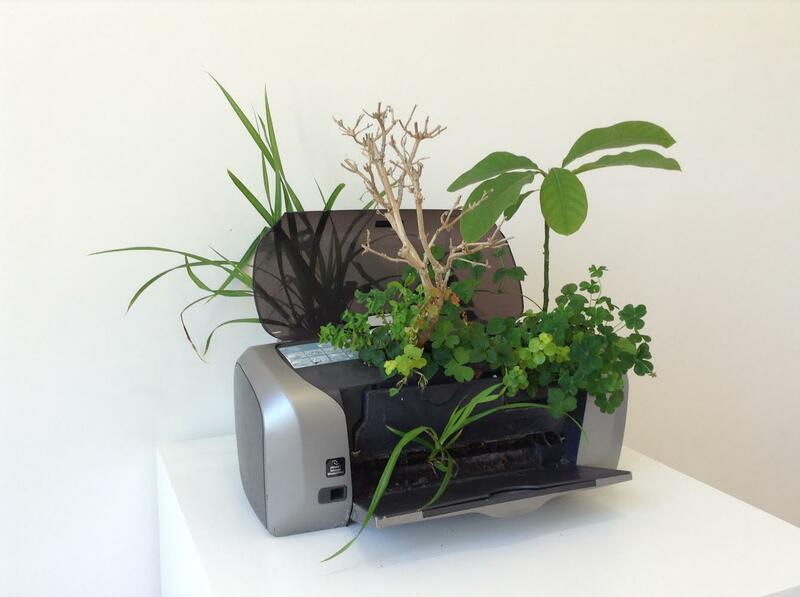De Nature en Sculpture. Fundación Villa Datris. L'Isle-Sur-La Sorgue, Francia
The exhibition De Nature en Sculpture shows how nature is perceived by contemporary artists—mainly, as source of inspiration and means of expression. Nature, whether reproduced or in its actual state, is, here, turned into sculpture, and vice versa. Engaging our emotions, the artists summon nature in all of its forms and reveal through their visions its many facets (peaceful, turbulent, sublime, and vexing).

With garden stretched along the Sorgue River, the Villa Datris Fondation exists in a state of harmony with water, vegetation, wind, and southern light. Indeed, that tie to the natural environment is a pillar of the foundation’s identity while also posing a challenge for artists. The exhibition De Nature en Sculpture shows how nature is perceived by contemporary artists—mainly, as source of inspiration and means of expression. Nature, whether reproduced or in its actual state, is, here, turned into sculpture, and vice versa. Engaging our emotions, the artists summon nature in all of its forms and reveal through their visions its many facets (peaceful, turbulent, sublime, and vexing).
Though man has, for centuries, cultivated and organized nature, the earth has expressed its wrath. Sensitive to the environment, some artists seek out nature with in situ interventions in works of Land Art, for instance, which continues to influence contemporary artists like Mireille Fulpius—her installation in Villa Datris’s garden attests to that movement’s enduring power.
Artists are renewing their understanding of natural beauty. If some, like Eva Jospin, are interested in personalizing it, others, like Anne Mangeot, Daniel Dezeuze and Moffat Takadiwa, create works from materials gathered during their travels or inspired by the savoir-faire of ancient and traditional cultures.
Thanks to advances in biology, the structure of nature and its components can be represented. By revealing things invisible, like DNA, science alters our perception. In the eighties, artists appropriated those discoveries: Elias Crespín and Manuel Merida, for instance, used technology to simulate nature’s movements.
-
Manuel MERIDA, Circulo de Tierra, 2013. Diametro de 71 cm. © Daniel Avena
-
Carlos MEDINA, Fragment de pluie, 1999. Aluminio, nylon. © Daniel Avena
-
Françoise COUTANT, Promenoir à nuages, 2003. Metal y recina. © Daniel Avena
-
Laurent PERNOT, Cactus, 2014. © Daniel Avena
-
Daniel DEZEUZE, Objets de cueillette, 1992. © Daniel Avena
-
Michel BLAZY, I Bookgarden, 2014. © Daniel Avena
-
Mireille FULPIUS, Instalation, 2017. © Daniel Avena
Drawn to the idea of creating artificial nature, man uses science and technology; some artists explore the endless possibilities of their artifacts. Michel Blazy acts as a researcher. He gives industrial objects rendered obsolete new life by planting vegetables in their cracks, thus re-conquering them in comic fashion.
For some artists, imagining the future is a way to question the present and modern civilization.
Going beyond the divide between the natural and the artificial, they take us into a future of science fiction. Laurent Pernot would freeze cactus; in Carlos Medina’s world, rain is made of metal; Françoise Coutant suggests that we take a cloud out for a walk. In this universe of fiction, anything is possible!
Since antiquity, artists’ primary concern has been imitating nature—its beauty and power. That fascination has taken a number of forms of representation. From the Garden of Eden in our imagination to environmental disasters, our vision of nature changes constantly. Nature today questions humankind as a whole, but especially artists, observers of a universe as alive as it is vulnerable. Before these mysteries and metamorphoses, artists set out to reinvent the nature of tomorrow. And, more than anything else, our actions today are responsible for its transformation, whether for good or for bad.




